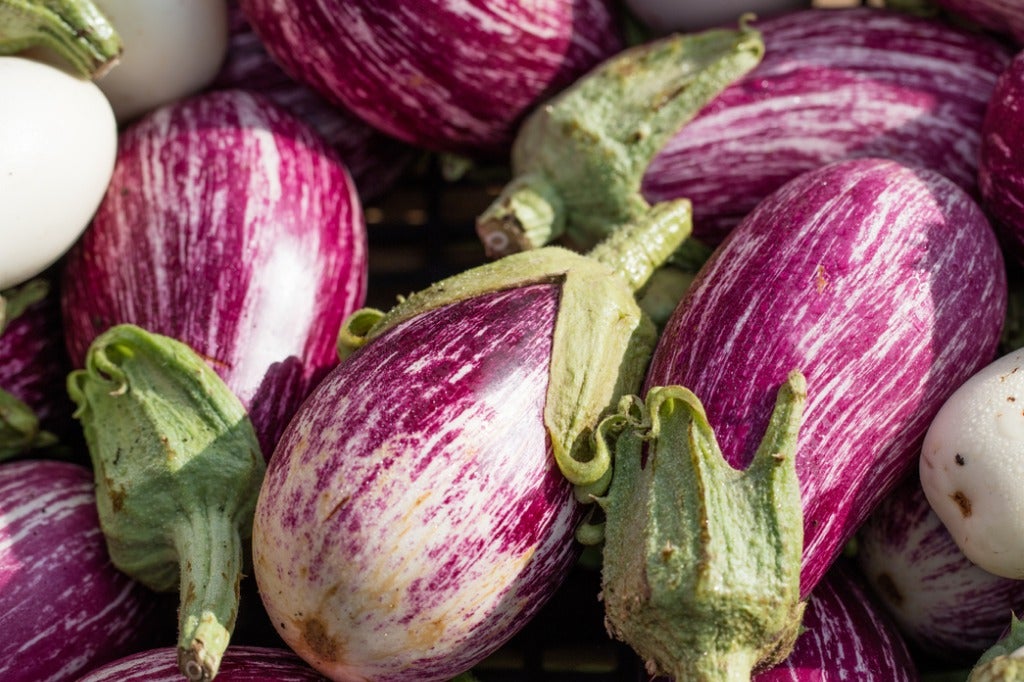Calliope Eggplant Info: Tips For Growing Calliope Eggplants


If you have never considered eggplant cute, take a look at the Calliope eggplant. What is a Calliope eggplant? The plant produces a truly egg-shaped fruit that has decorative splashes of color. It is almost too pretty to eat, but reportedly has a nice, lightly sweet flavor perfect for many types of cuisine. Learn more Calliope eggplant info so you can decide if you want to grow this neat plant yourself.
What is a Calliope Eggplant?
There are more types of eggplant than can be named. The Asian variety is usually slender, while the American type is a big, chubby fellow. African species are usually more rounded and it may be from these varieties from which Calliope hails. The fruits are fairly small, but the plant itself boasts a wonderful surprise, and Calliope eggplant uses are abundant.
The plants from which we get the delicious fruit can be a bit nasty, often covered in spines or sharp hairs. Enter the Calliope eggplant, which is spineless. Even the calyx of the fruit is devoid of poking growths. If you hate picking fruit from traditional plants, growing Calliope eggplants would be your best bet.
Plants grow up to 30 inches (76 cm.) with a spread of 18 inches (45.5 cm.). The fruits get up to 4 inches (10 cm.) but can be picked at half the size for a sweeter, more tender eggplant. The fruits are purple-red with white streaks. Calliope eggplant info reveals that this is an extremely productive variety.
Growing Calliope Eggplant
In most regions, start seed indoors in flats 6 to 8 weeks before the date of the last frost. If you live in a region with a long growing season, you can plant directly into a prepared bed two weeks after the last frost.
Soil temperatures for germination should be 75 to 90 Fahrenheit (24-32 C.). Expect germination in 10 to 15 days. Beds should be enhanced with compost and manure prior to transplanting. Young plants will need protection from wind. Space seedlings 36 inches (91.5 cm.) apart. You can expect young fruits in as little as 60 days.
Calliope Eggplant Care
Calliope eggplant care is easy. These plants seem to want to grow and are even useful in cooler climates.
Sign up for the Gardening Know How newsletter today and receive a free copy of our e-book "How to Grow Delicious Tomatoes".
Keep eggplant watered well during hot, dry periods. Use organic mulch around the base of the plant to prevent weeds. You can also use plastic mulch to reflect light, warm soil, and increase yields.
Use a slow-release fertilizer at transplant. Use diluted food once per month and side-dress with compost or well-rotted manure.
Watch for pests and act immediately.
Among the Calliope eggplant uses are soups, stews, egg dishes, roasted and pureed, fried, and even grilled.

Bonnie Grant is a professional landscaper with a Certification in Urban Gardening. She has been gardening and writing for 15 years. A former professional chef, she has a passion for edible landscaping.